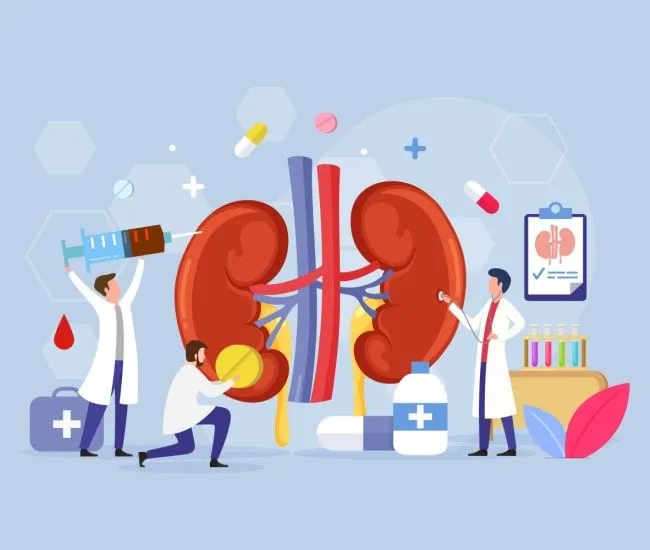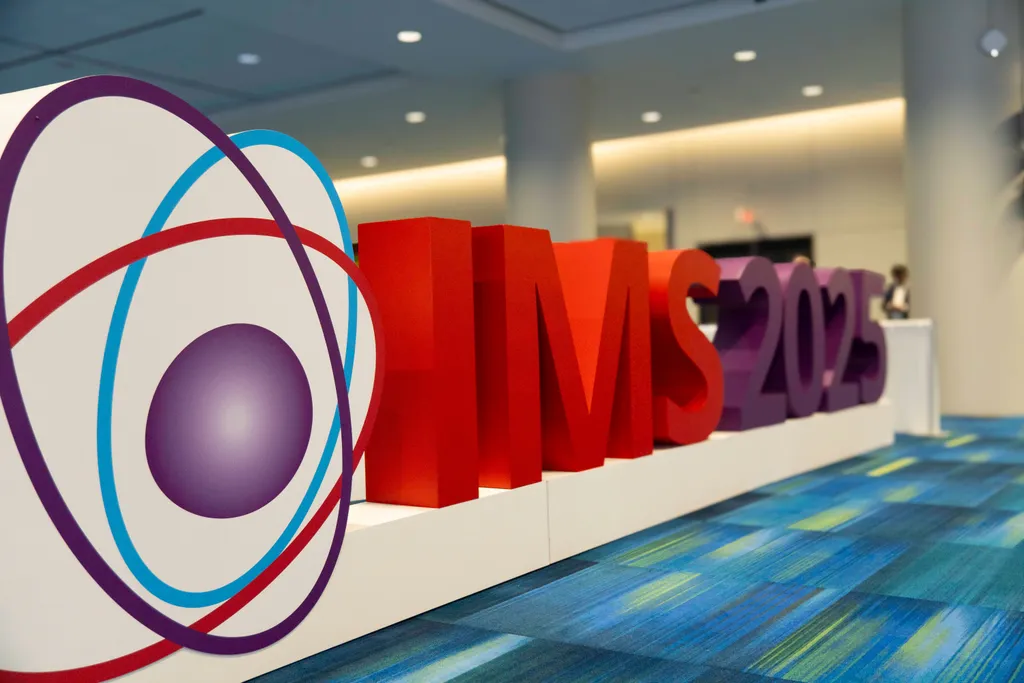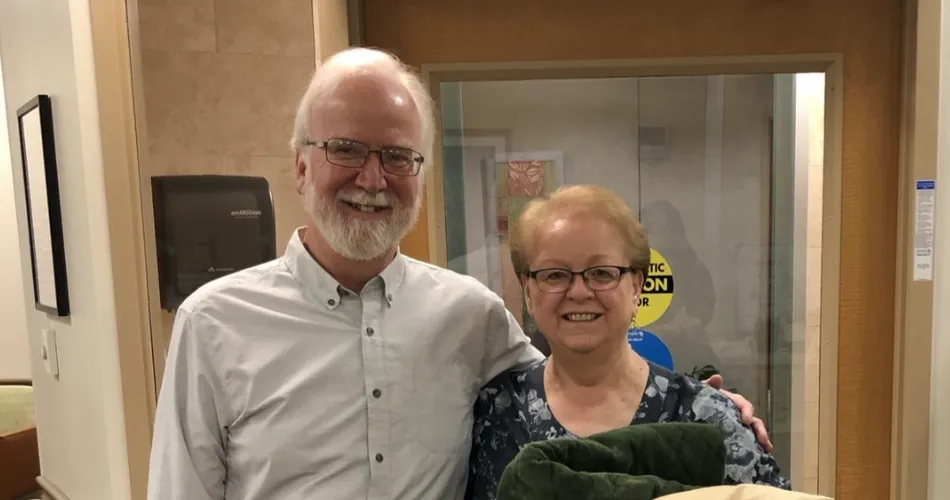What Is Olanzapine and How Is It Used to Treat Nausea Caused by Chemotherapy

Chemotherapy-induced nausea can be one of the most disruptive and distressing side effects of cancer treatment, especially when you’re receiving a highly emetogenic (nausea-causing) chemotherapy regimen. This kind of nausea can significantly impact a person’s ability to eat, sleep, and maintain a sense of normalcy during an already difficult time.
To address that issue and improve people’s quality of life, there are effective treatments available to help manage and reduce nausea. One medication that may be used for this purpose is olanzapine. This article will explain what olanzapine is and how it is used to treat nausea caused by chemotherapy.
What is olanzapine?
Olanzapine (Zyprexa, Eli Lilly/Zydis, Catalent) is a medication approved by the U.S. Food and Drug Administration (FDA) for various psychiatric disorders. It acts on dopamine and serotonin receptors, helping to regulate mood and behavior.
For people with cancer, olanzapine can also be used to treat chemotherapy-induced nausea. It can be given three different ways:
- Tablet
- Disintegrating tablet, which can help avoid making nausea and vomiting worse
- Injection for people who can’t tolerate oral medications
Common side effects of olanzapine are:
- Drowsiness
- Low blood pressure when standing
- Dizziness
- Indigestion
- Restlessness
- Weight gain
Less commonly, olanzapine may cause abnormal movement symptoms known as extrapyramidal effects.
How does olanzapine work for nausea?
Olanzapine works by blocking receptors that can be stimulated by chemotherapy to produce nausea. Olanzapine can last up to 30 hours and it works quickly to treat nausea. If ingested, it can reduce nausea 6 hours after ingesting. If injected, it can work in 15 minutes. When combined with other medications, all pathways that cause nausea after chemotherapy are blocked.
National guidelines recommend olanzapine for some people with chemotherapy-induced nausea
Using olanzapine for nausea is considered an off-label use. This means that the U.S. Food and Drug Administration (FDA) has not specifically approved olanzapine to prevent nausea. Off-label use of a medication is common, especially during cancer treatment. And research shows that olanzapine works well to prevent nausea, especially for people who receive chemotherapy treatments that are more likely to cause nausea. These are called highly emetogenic chemotherapies.
The 2020 update to an American Society of Clinical Oncology (ASCO) guideline about preventing nausea recommends olanzapine in combination with other medications for some patients. On the same day chemotherapy begins, the guideline recommends preventing nausea with a four-medication combination that includes:
- An NK1 receptor antagonist
- A serotonin (5-HT3) receptor antagonist
- Dexamethasone
- Olanzapine
Despite this recommendation and studies showing that olanzapine is effective, research has found that olanzapine is not commonly used in real-world clinical settings.
How can olanzapine be prescribed?
A recent study looked at how often olanzapine was prescribed in academic cancer centers and community oncology clinics for patients treated with highly emetogenic chemotherapy. Researchers used health records to analyze who received the full four-medication regimen and who did not. The goal was to identify how factors like age, cancer type, where they received treatment, and where they lived influenced the type of anti-nausea treatment patients received.
Out of 668 patients in the study, only 29.8% received all four recommended medications. The remaining 70.2% received just the three: a 5HT3RA, an NK1RA, and dexamethasone, excluding olanzapine. Other findings included:
- Older patients were less likely to receive olanzapine. This was true for patients between ages 60 and 69 and even more so for those 70 and older. This was likely due to concerns about side effects like sedation or confusion.
- Underweight patients were more likely to receive olanzapine. Patients with a body mass index (BMI) under 18.5 may have been prescribed olanzapine more often to help maintain nutrition during treatment.
- Lower-middle-income status reduced likelihood of receiving olanzapine. Patients from these areas were prescribed the medication less often, suggesting disparities in supportive care.
- Academic cancer centers were more likely to prescribe olanzapine. Compared to community clinics, academic sites were more likely to follow antiemetic guidelines. This shows a possible gap in evidence-based supportive care practice.
- Patients living farther from treatment centers were more likely to receive olanzapine. This measure could have prevented nausea in patients with limited access to immediate care.
The study highlights that olanzapine prescribing is shaped by clinical, social, and geographic factors, not just medical guidelines. This gap between recommendations and real-world practice means some patients may not receive the full benefit of anti-nausea prevention during HEC.
Making a plan to prevent and manage chemotherapy-induced nausea and vomiting
There are many ways to treat and manage chemotherapy-induced nausea and vomiting. Talk to your health care team about how you can prevent and manage these side effects before you start treatment. There are many different medications that can be used.
Treating chemotherapy-induced nausea is important. Nausea and vomiting can affect your quality of life, make it hard to get the nutrition you need, and may even make it difficult for you to continue treatments.
You may also consider using complementary therapies to help manage nausea. Complementary therapies are used in addition to cancer treatments to help manage side effects. Acupuncture, aromatherapy, and diet changes are examples of complementary therapies you can use to help manage nausea and vomiting. ead more about these complementary therapies in the following articles:
- Aromatherapy for Nausea: Four Essential Oils to Try
- Ginger is the #2 Solution for Myeloma Patient Nausea
Final thoughts
Olanzapine plays an important role in controlling nausea in difficult-to-treat chemotherapy-induced nausea. It can significantly improve your quality of life, and possibly reduce the chances of readmissions.
For more resources on managing the side effects of cancer treatment, visit the HealthTree Side Effect Solutions or read more articles like this in the HealthTree News section. Staying informed empowers you to advocate for supportive care that aligns with the latest evidence.
Sources:
- ANTIE-005 UNDERSTANDING REAL-WORLD MULTI-LEVEL DETERMINANTS OF OLANZAPINE PRESCRIBING FOR PATIENTS RECEIVING HIGHLY-EMETOGENIC CHEMOTHERAPY
- Antiemetics: ASCO Guideline Update
- Olanzapine Reduces Nausea and Vomiting Caused by Advanced Cancer
- Olanzapine Helps Prevent Nausea and Vomiting Caused by Chemotherapy
- Olanzapine
Chemotherapy-induced nausea can be one of the most disruptive and distressing side effects of cancer treatment, especially when you’re receiving a highly emetogenic (nausea-causing) chemotherapy regimen. This kind of nausea can significantly impact a person’s ability to eat, sleep, and maintain a sense of normalcy during an already difficult time.
To address that issue and improve people’s quality of life, there are effective treatments available to help manage and reduce nausea. One medication that may be used for this purpose is olanzapine. This article will explain what olanzapine is and how it is used to treat nausea caused by chemotherapy.
What is olanzapine?
Olanzapine (Zyprexa, Eli Lilly/Zydis, Catalent) is a medication approved by the U.S. Food and Drug Administration (FDA) for various psychiatric disorders. It acts on dopamine and serotonin receptors, helping to regulate mood and behavior.
For people with cancer, olanzapine can also be used to treat chemotherapy-induced nausea. It can be given three different ways:
- Tablet
- Disintegrating tablet, which can help avoid making nausea and vomiting worse
- Injection for people who can’t tolerate oral medications
Common side effects of olanzapine are:
- Drowsiness
- Low blood pressure when standing
- Dizziness
- Indigestion
- Restlessness
- Weight gain
Less commonly, olanzapine may cause abnormal movement symptoms known as extrapyramidal effects.
How does olanzapine work for nausea?
Olanzapine works by blocking receptors that can be stimulated by chemotherapy to produce nausea. Olanzapine can last up to 30 hours and it works quickly to treat nausea. If ingested, it can reduce nausea 6 hours after ingesting. If injected, it can work in 15 minutes. When combined with other medications, all pathways that cause nausea after chemotherapy are blocked.
National guidelines recommend olanzapine for some people with chemotherapy-induced nausea
Using olanzapine for nausea is considered an off-label use. This means that the U.S. Food and Drug Administration (FDA) has not specifically approved olanzapine to prevent nausea. Off-label use of a medication is common, especially during cancer treatment. And research shows that olanzapine works well to prevent nausea, especially for people who receive chemotherapy treatments that are more likely to cause nausea. These are called highly emetogenic chemotherapies.
The 2020 update to an American Society of Clinical Oncology (ASCO) guideline about preventing nausea recommends olanzapine in combination with other medications for some patients. On the same day chemotherapy begins, the guideline recommends preventing nausea with a four-medication combination that includes:
- An NK1 receptor antagonist
- A serotonin (5-HT3) receptor antagonist
- Dexamethasone
- Olanzapine
Despite this recommendation and studies showing that olanzapine is effective, research has found that olanzapine is not commonly used in real-world clinical settings.
How can olanzapine be prescribed?
A recent study looked at how often olanzapine was prescribed in academic cancer centers and community oncology clinics for patients treated with highly emetogenic chemotherapy. Researchers used health records to analyze who received the full four-medication regimen and who did not. The goal was to identify how factors like age, cancer type, where they received treatment, and where they lived influenced the type of anti-nausea treatment patients received.
Out of 668 patients in the study, only 29.8% received all four recommended medications. The remaining 70.2% received just the three: a 5HT3RA, an NK1RA, and dexamethasone, excluding olanzapine. Other findings included:
- Older patients were less likely to receive olanzapine. This was true for patients between ages 60 and 69 and even more so for those 70 and older. This was likely due to concerns about side effects like sedation or confusion.
- Underweight patients were more likely to receive olanzapine. Patients with a body mass index (BMI) under 18.5 may have been prescribed olanzapine more often to help maintain nutrition during treatment.
- Lower-middle-income status reduced likelihood of receiving olanzapine. Patients from these areas were prescribed the medication less often, suggesting disparities in supportive care.
- Academic cancer centers were more likely to prescribe olanzapine. Compared to community clinics, academic sites were more likely to follow antiemetic guidelines. This shows a possible gap in evidence-based supportive care practice.
- Patients living farther from treatment centers were more likely to receive olanzapine. This measure could have prevented nausea in patients with limited access to immediate care.
The study highlights that olanzapine prescribing is shaped by clinical, social, and geographic factors, not just medical guidelines. This gap between recommendations and real-world practice means some patients may not receive the full benefit of anti-nausea prevention during HEC.
Making a plan to prevent and manage chemotherapy-induced nausea and vomiting
There are many ways to treat and manage chemotherapy-induced nausea and vomiting. Talk to your health care team about how you can prevent and manage these side effects before you start treatment. There are many different medications that can be used.
Treating chemotherapy-induced nausea is important. Nausea and vomiting can affect your quality of life, make it hard to get the nutrition you need, and may even make it difficult for you to continue treatments.
You may also consider using complementary therapies to help manage nausea. Complementary therapies are used in addition to cancer treatments to help manage side effects. Acupuncture, aromatherapy, and diet changes are examples of complementary therapies you can use to help manage nausea and vomiting. ead more about these complementary therapies in the following articles:
- Aromatherapy for Nausea: Four Essential Oils to Try
- Ginger is the #2 Solution for Myeloma Patient Nausea
Final thoughts
Olanzapine plays an important role in controlling nausea in difficult-to-treat chemotherapy-induced nausea. It can significantly improve your quality of life, and possibly reduce the chances of readmissions.
For more resources on managing the side effects of cancer treatment, visit the HealthTree Side Effect Solutions or read more articles like this in the HealthTree News section. Staying informed empowers you to advocate for supportive care that aligns with the latest evidence.
Sources:
- ANTIE-005 UNDERSTANDING REAL-WORLD MULTI-LEVEL DETERMINANTS OF OLANZAPINE PRESCRIBING FOR PATIENTS RECEIVING HIGHLY-EMETOGENIC CHEMOTHERAPY
- Antiemetics: ASCO Guideline Update
- Olanzapine Reduces Nausea and Vomiting Caused by Advanced Cancer
- Olanzapine Helps Prevent Nausea and Vomiting Caused by Chemotherapy
- Olanzapine

about the author
Jimena Vicencio
Jimena is an International Medical Graduate and a member of the HealthTree Writing team. Currently pursuing a bachelor's degree in journalism, she combines her medical background with a storyteller’s heart to make complex healthcare topics accessible to everyone. Driven by a deep belief that understanding health is a universal right, she is committed to translating scientific and medical knowledge into clear, compassionate language that empowers individuals to take control of their well-being.
More on Navigating Your Health
Trending Articles




Get the Latest Multiple Myeloma Updates, Delivered to You.
By subscribing to the HealthTree newsletter, you'll receive the latest research, treatment updates, and expert insights to help you navigate your health.
Together we care.
Together we cure.
3x Faster.









